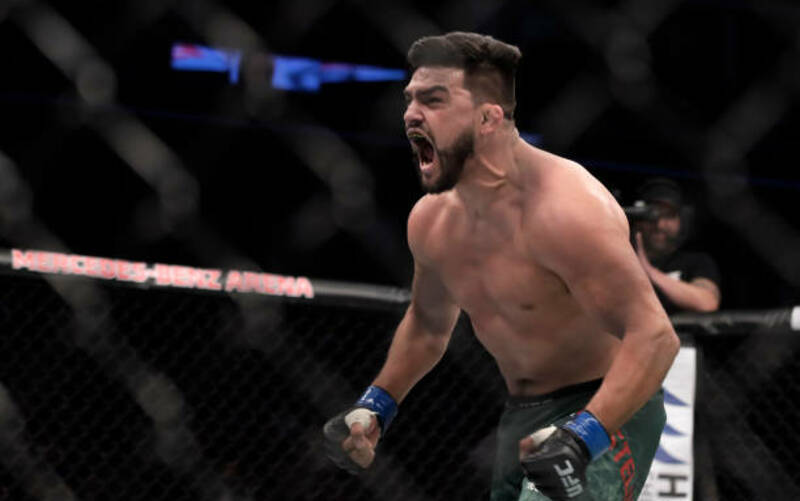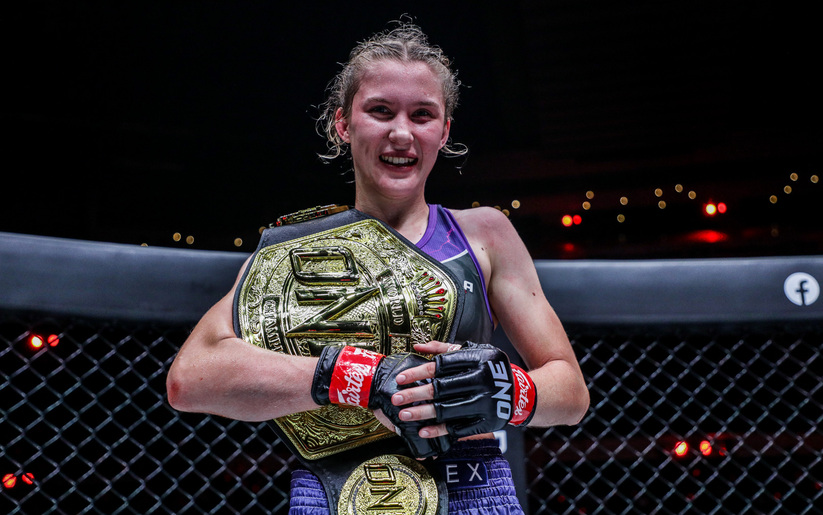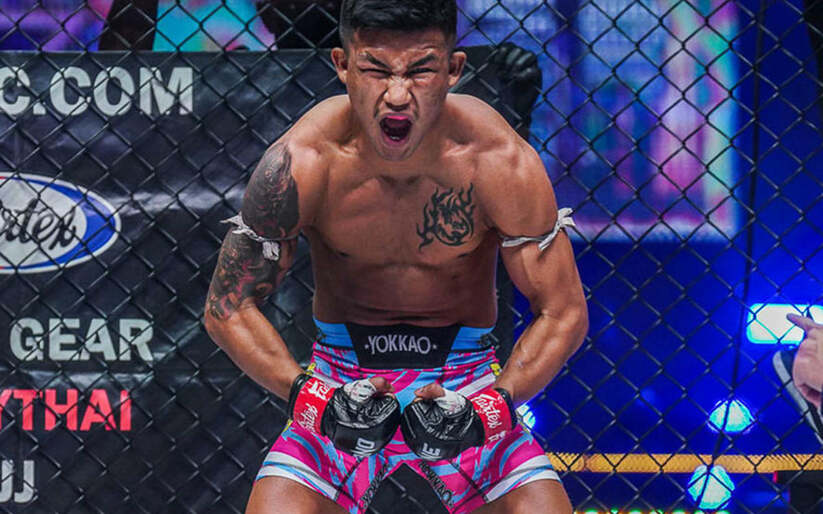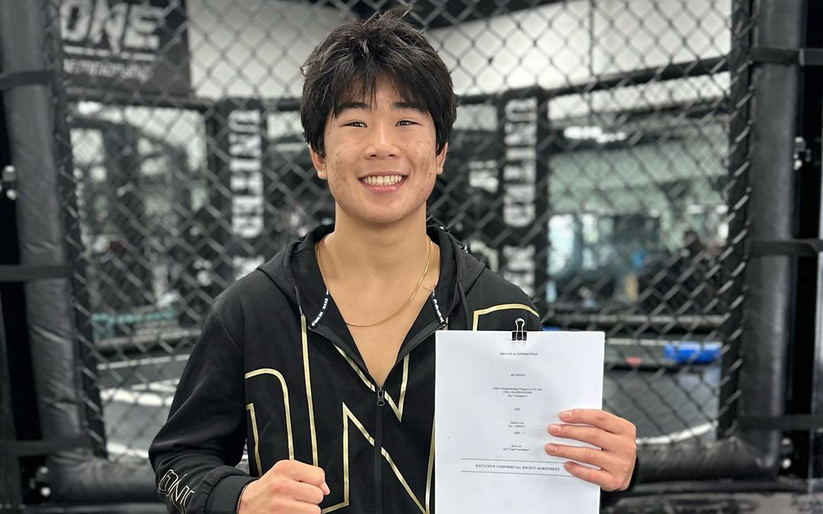Describing the portrait of middleweight title contender Kelvin Gastelum feels repetitive. The fighter’s last several fights possess a certain circularity. However, he didn’t start this way.
Reputation & Potential
Beginning as the runt of the litter on Season 17 of The Ultimate Fighter, Gastelum quickly garnered a reputation as an overachiever when he upset the then-heralded Uriah Hall as a +300 underdog. His TUF run was unrefined, but characterized by a grueling pace and well-roundedness. If there was one thing that carried Gastelum through his TUF run, it was his will to win.
Throughout his early years in the UFC, fans and commentators clamored about Gastelum’s potential. With frightening speed and a brick shithouse frame, there was a lot to be excited about in Kelvin’s early appearances. After trying his hand at welterweight, Gastelum then became known as a bit more of a wildcard. His in fight results were generally quite good with his only two losses coming by way of split decision, but there was always something off with Kelvin.
Most of the time, it was the scale. In six welterweight appearances, Gastelum missed weight three separate times with his bout against Tyron Woodley being the worst offender (weighing in at a doughy 180 pounds). With an attempted seventh welterweight fight with Donald Cerrone slated for UFC 205, Gastelum didn’t even attempt to weigh in, scrapping the entire fight. According to Dana White (and as it currently stands), this was Gastelum’s last attempt at 170. Nonetheless, he was still a top prospect. He was winning a lot more than he was losing, and while largely unrefined technically, he made up for it with tenacity and being dangerous everywhere a fight went.
After a certain point, however, Gastelum’s reputation seemed to supersede his potential. Glimpses of the miniature Cain Velasquez model that we saw in TUF began fading for something much more streamlined and selective. Instead of the burrowing wrestle-grinder and back-taker that burned through his early career, we were left with a darting blitzer which sacrificed a rough archetype for sheer offense. The man has found himself in middleweight title contention with a thudding jab-hook, a straight left and an exhaustingly persistent scrambling ability.
Despite phasing out of fights, missing weight repeatedly, stagnating technically, and consistently having to fight out of dangerous positions, Gastelum doesn’t ever seem to hit a ceiling. Even if a reputable name on his resume gets overturned for marijuana use or if he manages to get his neck strangled after looking lethargic for three rounds, nothing ever seems to impede Gastelum’s upward trajectory that much, if at all. Middleweight’s depth as a division is neither young enough nor talented enough to keep a distinguished athlete like Gastelum in the fringe top-10 tier. Only in the last 12 months has a single promising contender by the name of Israel Adesanya soared into contention.
The Wrestling Principle
One of the narratives attached to Gastelum’s treacherous middleweight run has been the development of his bone-shattering power. At welterweight, Kelvin boxed more like a sort of volume puncher. He hit hard, but rarely hard enough to put people on their ass, let alone finish them. At middleweight, however, Gastelum has recorded at least one knockdown against every single opponent he’s faced, save for Nate Marquardt (whom Gastelum simply thrashed anyways). It has become predictable for Kelvin; land the left as hard as humanly possible, enjoy your work, and then take some time relaxing before searching for the cross again. Sometimes that relaxation period takes place on the mat, as Gastelum doesn’t seem to mind being taken down by athletes larger than him, even for minutes at a time. One can almost hear Gastelum’s thought process in these moments, “It’s okay. He’ll get tired and he can’t hurt me.”
Wrestling is widely considered to be the best base for MMA, but there’s a vital tradeoff at play during these kinds of exchanges. Repeatedly forcing clinching or wrestling exchanges in which the two competitors are physically locked in close quarters, leveraging their strength and size against the other, is exhausting. Taking down an opponent early in a fight is typically a good sign if you’re a wrestler or grappler, but if they are able to spring back up without absorbing much damage, then how much energy was the takedown worth in the first place?
Gastelum’s career success has been predicated on this principle. Back at welterweight, Neil Magny managed to win some scrambles off of Gastelum with his wiry frame and waist-lock takedowns, and it wasn’t until the fourth round that Gastelum finally decided to attempt some offense, knocking Magny down twice and nearly finishing him. In a “punishment” middleweight fight against Tim Kennedy, Gastelum just sprung back up from the older man’s takedown attempts before turning him into target practice until Kennedy was utterly destroyed.
Chris Weidman spent the majority of the first round of their fight working Gastelum from half-guard, framing his chin with elbows and smothering him with submission attempts. However, when Weidman began cranking on a power submission, Gastelum somehow managed to buck his hips and explode back to his feet. A minute later, Weidman nearly had his head taken off by a blistering straight left by Kelvin. Not the prettiest round by any means, but it’s hard to argue with results, right?
The second round was more of the same from Weidman. Another body-lock dump, followed by nearly a full round of mauling from top position. For a fighter plagued with stamina issues, this was one of his best and most complete rounds in years. By the end of the second, however, Gastelum was still in one piece, looking as smug as ever. Surely, Weidman wouldn’t be able to keep his own pace.
In the opening moments of the third, both men began like it was the final round, slinging heavy leather both ways, waiting for their opponent to drop. Most of us expected Weidman to be the one to give first. Instead, it was Gastelum. After suffering a brief knockdown, Gastelum began reacting slower and slower to the punches coming his way before being taken down and constricted into an arm triangle halfway through the round. Gastelum’s principle rule had failed him, and Weidman didn’t exhaust himself grappling with the younger, faster athlete. This was supposed to be Kelvin’s hard ceiling. It wasn’t.
Bouncing Back
After the loss to Weidman, there were some genuinely concerning questions swirling around Gastelum’s future. The easy answer seemed to be drop to welterweight, but Gastelum didn’t seem too thrilled with the idea. Being offered a fight with the middleweight great, Anderson Silva, seemed interesting enough for the young contender, but it was never meant to be permanent. In an interview with ESPN’s Brett Okamoto, Gastelum himself said, “Anderson was the only reason I even thought about staying at 185. If there wouldn’t have been that, I would have tried to convince Dana to give me a fight at 170. I think there’s where I’ll end up,” (Kelvin Gastelum talks opponent switch, interest in welterweight, ESPN).
Gastelum was left with a frustrating conundrum: if he’s too big (or simply not disciplined enough in the off time) to consistently make 170, so be it, but what if he just can’t compete with the elite athletic talents at middleweight? Where would he go?
The answer was Shanghai. After former welterweight Georges St-Pierre submitted the unlikely middleweight champion Michael Bisping, the losing Brit took an ill-advised fight on three weeks notice against Gastelum. Most pundits agreed that it was too sharp a turn around for the 38-fight veteran. Unless the upset loss to Weidman had seriously hampered Gastelum’s confidence, he was probably going to win it.
There was a silver lining for Gastelum in this potential squash match, however. When an elite fighter is given an opponent that poses them very little threat, there is an opportunity for the favored fighter to experiment with different elements of their game. With the pressure largely off Kelvin, this was a chance for him to exemplify his growth and demonstrate new elements of his game. Analysts noted Gastelum’s hampered technical development, so this rebounding performance could shut them up if Gastelum wanted to spread his wings beyond his usual 1-2 combination.
Sure enough, six seconds into the fight, Gastelum launched his patented 1-2. Then again. Finally, the combination landed flush on Bisping’s chin and the fight was over. Gastelum predictably laid waste to the Brit in the first frame. No new skills were shown, and Kelvin mostly just reaffirmed what he always was: a heavy hitter with a big left hand, and not much else. An impressive knockout from a former welterweight wrestler no less, but an expected outcome.
Less expected was Gastelum’s final fight before netting a title shot against the towering Jacare Souza. On the surface, it was a matchup that looked like everything Gastelum had struggled with for years. Souza was an aging athlete, sure, but his technical grappling acumen and physical ferocity were enough to cement him in the middleweight top 5 for years. Jacare was a fighter willing to throw back at opponents after being hit, and not someone that should be engaged on the mat for any reason at all.
In Gastelum’s back pocket, however, was the wrestling principle, and this was the winning formula once again. Jacare stormed Gastelum early in the first round, clinching him and dragging him to the mat before mauling the former welterweight for nearly four full minutes. For Jacare, four minutes on top of an opponent usually means a finish. Not this time.
With equal parts technique and urgency, Gastelum thrashed off of his back and managed to prevent getting locked into any fight-ending positions. His face had been hammered in with elbows, and a coiling master of a grappler had sliced his guard open from the moment his back touched the mat. At the end of the first round, however, Gastelum was still alive and Jacare was already tired. Round 1 was a dominant 10-8 for Jacare and it was the moment the fight was over for him.
For the next two rounds, Gastelum and Jacare engaged in a gritty, grueling battle of wills in which both men tried their damnedest to win simply by throwing harder than the other. Jacare lumbered forward, missing on every takedown attempt but landing nearly every right hand he had in his arsenal, while Gastelum was forced to frame Jacare’s wrestling attempts off, while completely disregarding the punches being thrown his way. Outside of one singular knockdown, courtesy of Gastelum’s favorite punch, the next two frames were extremely close. If there was one thing you could say Gastelum did better than Jacare in the final 10 minutes of the fight, it was looking less tired.
In the end, Gastelum was awarded a contentious decision victory and with it was granted a title shot. It was a brutal fight that seemed to bring more appreciation for the aging grappler than it did for the victor. Gastelum didn’t win the fight due to clever striking, technical defense, or thoughtful setups. He didn’t gameplan for Jacare effectively, nor did he convincingly command the fight from bell to bell. He won simply by hitting harder, taking a better shot, and being younger.
Blood of a Champion
The defending champion Robert Whittaker shares Gastelum’s former welterweight notoriety, but his approach to fighting couldn’t be more different. While Gastelum has been the subject of criticism for his lack of development, Whittaker has become a staple of technical proficiency in the sport, regularly called one of the most skilled and cleanest midrangers in MMA. Gastelum tends to get zeroed in on the left hand and often lets precious fight time slip away, while Whittaker is constantly adjusting his approach and modulating his strike cadence. Powerhouse wrestlers like Jacare and Weidman have managed to force Gastelum into protracted sections of grappling and scrambling consistently. Whittaker shucked off the takedowns of an Olympic silver medalist on one leg.
Even Whittaker’s diciest bout on his way to the title still ended in a first-round knockout against Derek Brunson. His following performance against Jacare Souza was nothing short of masterful, a completely different fight than Gastelum showed against the same opponent. The middleweight champion is someone who has been coached into doing the right things all the time, making the necessary adjustments at the correct moments. In almost any given moment in a fight, the New Zealander is constantly feinting and using throwaways into punch entries, perpetually moving his head off-line and angling after throwing. Every part of Whittaker’s technical game can be looked at as being correct and polished.
He still might be the more fragile party in this fight. Whittaker’s last 50 minutes of fight time have consisted of colliding fists, elbows, knees and shins against the force of nature known as Yoel Romero, in which both men have likely hacked off permanent slabs of each other’s longevity that they’ll never get back. On the heels of two of the greatest fights in the sport’s history, Whittaker is now forced to contend with what comes after. Gastelum has made his own run to the title more difficult for himself than it needed to be, but he has never found himself entrenched in a career-altering war in which every punch, every slip, every angle has dire consequences.
Still, if ever there was a moment to fully synthesize every isolated piece of Gastelum’s obstructing game, Saturday is the time to do it. After almost six years in the UFC and ensuring a reputation as a frontrunner, if Gastelum can finally produce the next-level performance that people have been expecting from him since 2013. Maybe we finally get to witness a fusion of the athletic prototype seen in Gastelum’s TUF success combined with the vicious and sustained output that has shown its face in bursts against Kennedy and Hendricks. Maybe Gastelum does what Romero couldn’t and simply sneaks in one razored left hand that shuts Whittaker’s brain off. Or maybe Gastelum decides once again that pushing too hard, too long will only make things worse, and closes up shop to try again another time.
Main Photo
Embed from Getty Images



